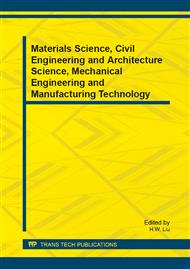p.689
p.696
p.700
p.704
p.708
p.712
p.716
p.722
p.728
Study on CCT Curve and Microstructure Evolution of a Vanadium-Containing Steel Rebar
Abstract:
The microstructure evolution and hardness change were studied for a vanadium-containing steel rebar at different cooling rates. The experimental results show that bainite and martensite gradual emerged with the increasing cooling rate and resulted in an increasing micro-hardness. Bainite or ferrite and peartite should gradually disappear when the cooling rate increased to a certain value. The cooling rate should be controlled below 10°C/s to ensure good performances. The CCT curve of HRB400E measured with the inflation method and metallographic-Hardness method could provide the theoretical basis for controlled cooling process.
Info:
Periodical:
Pages:
708-711
Citation:
Online since:
January 2014
Authors:
Keywords:
Price:
Сopyright:
© 2014 Trans Tech Publications Ltd. All Rights Reserved
Share:
Citation:


